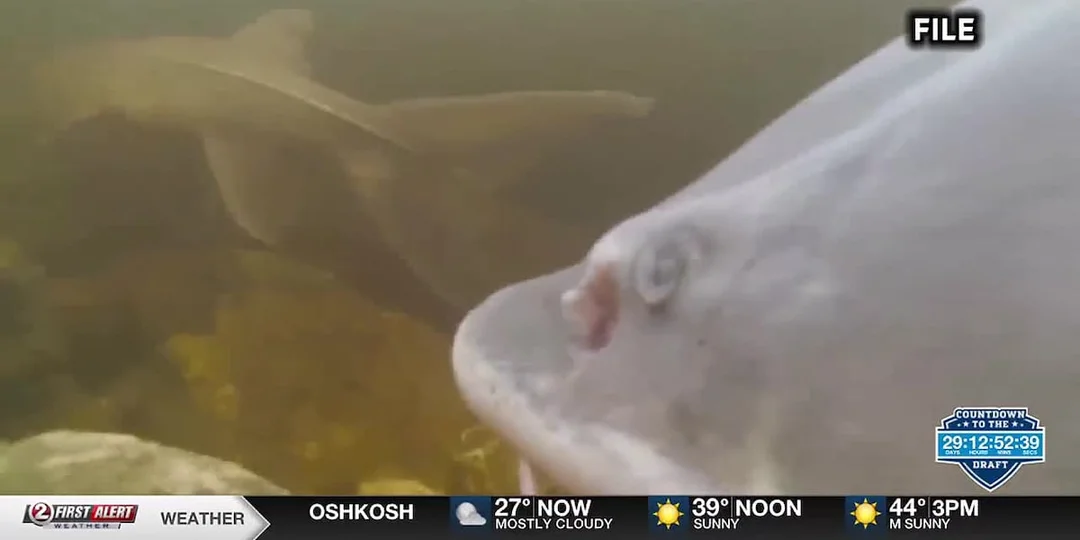
The Fascinating Sturgeon Spawning Season: A Prehistoric Marvel
MADISON — The water conditions are just right, and the sturgeon are making their way up the rivers, marking the start of a captivating spawning season for these ancient fish. This event inspires awe among local communities and conservationists alike, highlighting the significant conservation efforts that have helped revive the population of this prehistoric wonder.

According to the Wisconsin Department of Natural Resources (DNR), sturgeon can currently be seen spawning on the Upper Fox River near the Princeton Dam and the Wolf River near Bamboo Bend. The DNR has reported some staging at the Peshtigo Dam as well. They typically spawn from mid-April to early May, a unique biological event that people look forward to each year.
While this year’s spawning season kicked off a bit later than expected, it has drawn interest from local residents. Cecil Fuss, a local enthusiast, remarked, “Most years, they’re in pretty thick by this time. But they’re pretty late this year.” This sentiment is echoed by many who eagerly anticipate the arrival of these remarkable fish.
The Lake sturgeon, which can weigh between 200-300 pounds and grow over seven feet long, is a remarkable embodiment of resilience. After almost facing extinction, it has rebounded significantly, no longer being listed as an endangered species thanks to concerted management efforts such as fish stocking and habitat conservation.
The U.S. Fish and Wildlife Service plays a critical role in these efforts, collecting fertilized sturgeon eggs and raising them in hatcheries. The Genoa National Fish Hatchery in Wisconsin boasts one of the largest operations in the country, nurturing over 60,000 eggs annually before releasing more mature fry back into the wild.
This dedicated work connects generations of people and wildlife, as Angie Sheehan, President & CEO of Little Rapids Corporation, which is located near the spawning areas, stated, “We have generations of people who have worked at this mill, just like we have generations of fish that are right outside our facility.”
As the spawning season gathers momentum, the local community anticipates the surge of these prehistoric fish. While some sturgeon sightings are rare early on, experts anticipate that as water temperatures rise around 53 degrees Fahrenheit, the river will soon be teeming with life.
The DNR invites enthusiasts to help observe this natural spectacle, providing information on parking and trails for optimal viewing. Each sturgeon sighting not only showcases this magnificent creature but also serves as a testament to the ongoing conservation work striving to ensure their survival for future generations.
As we reflect on the revival of the sturgeon, one must wonder: What other historical creatures might be saved through dedicated conservation efforts? Share your thoughts and experiences regarding wildlife conservation in the comments below!